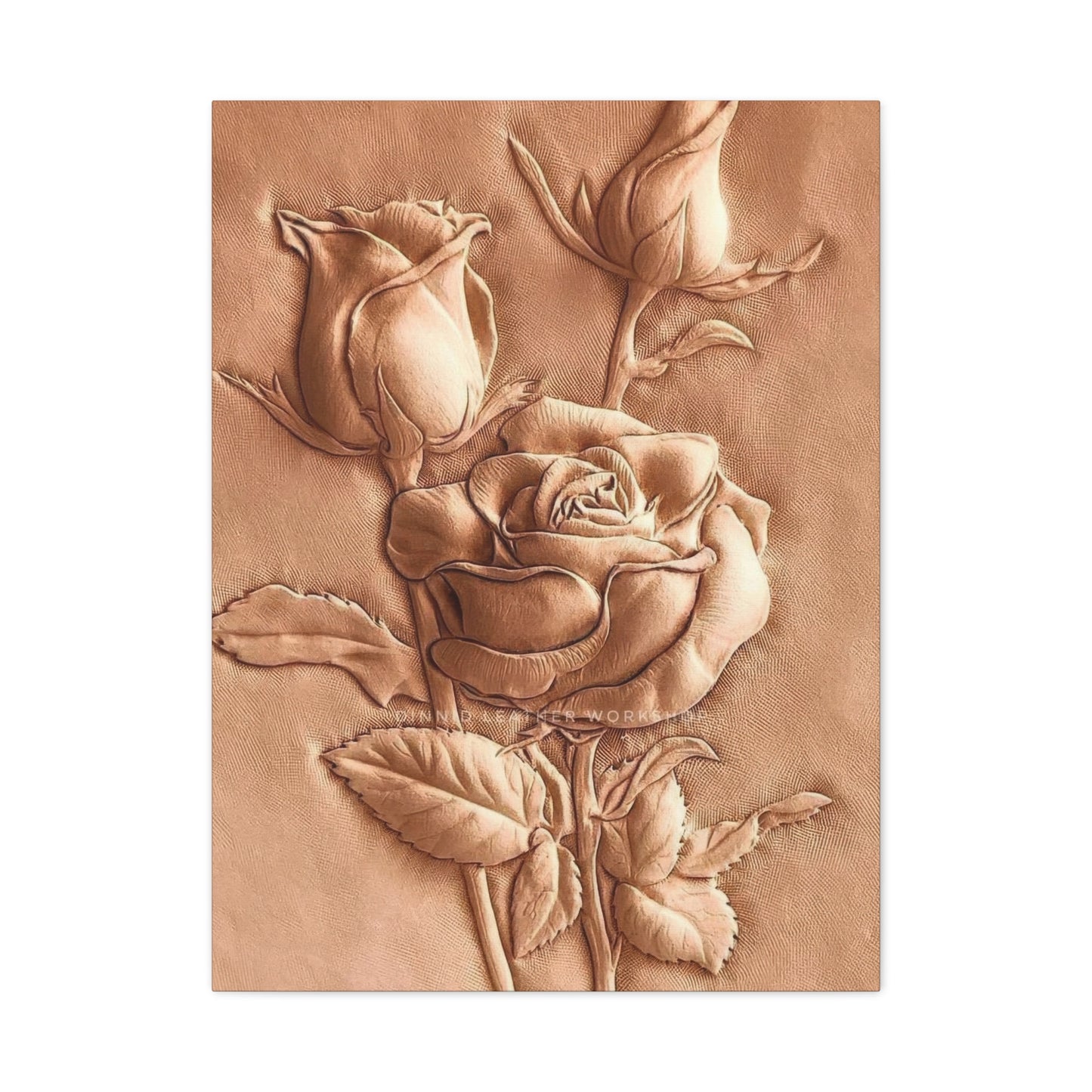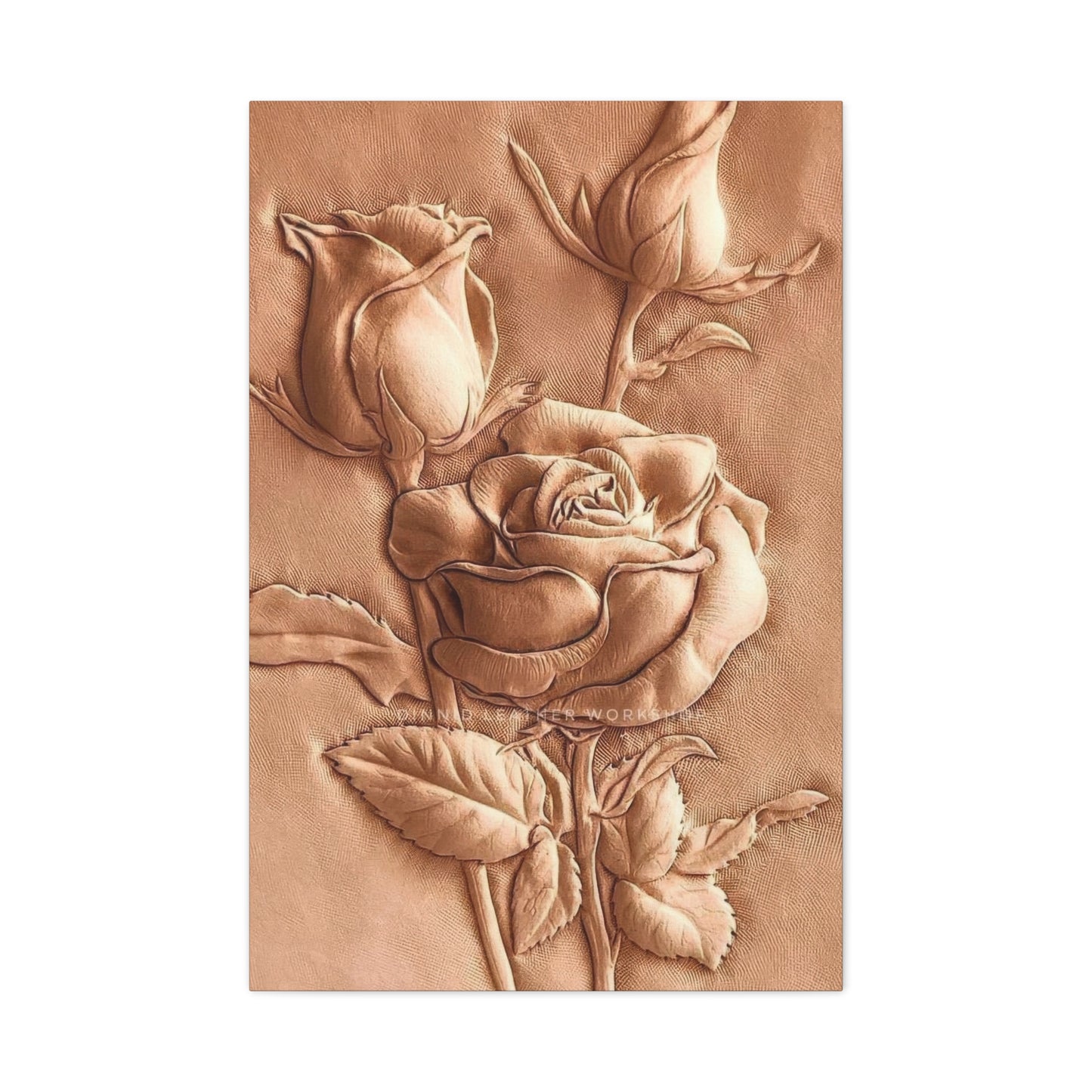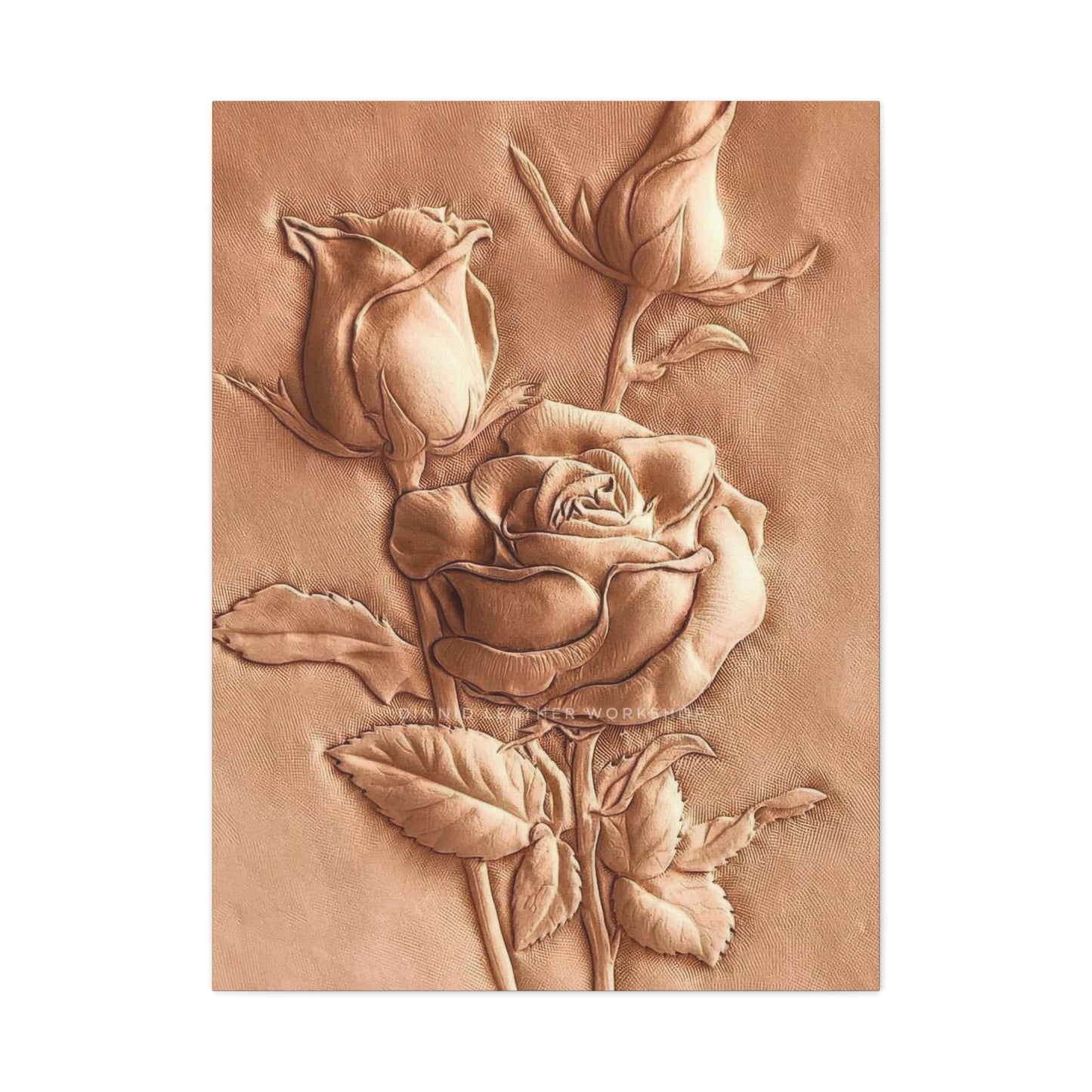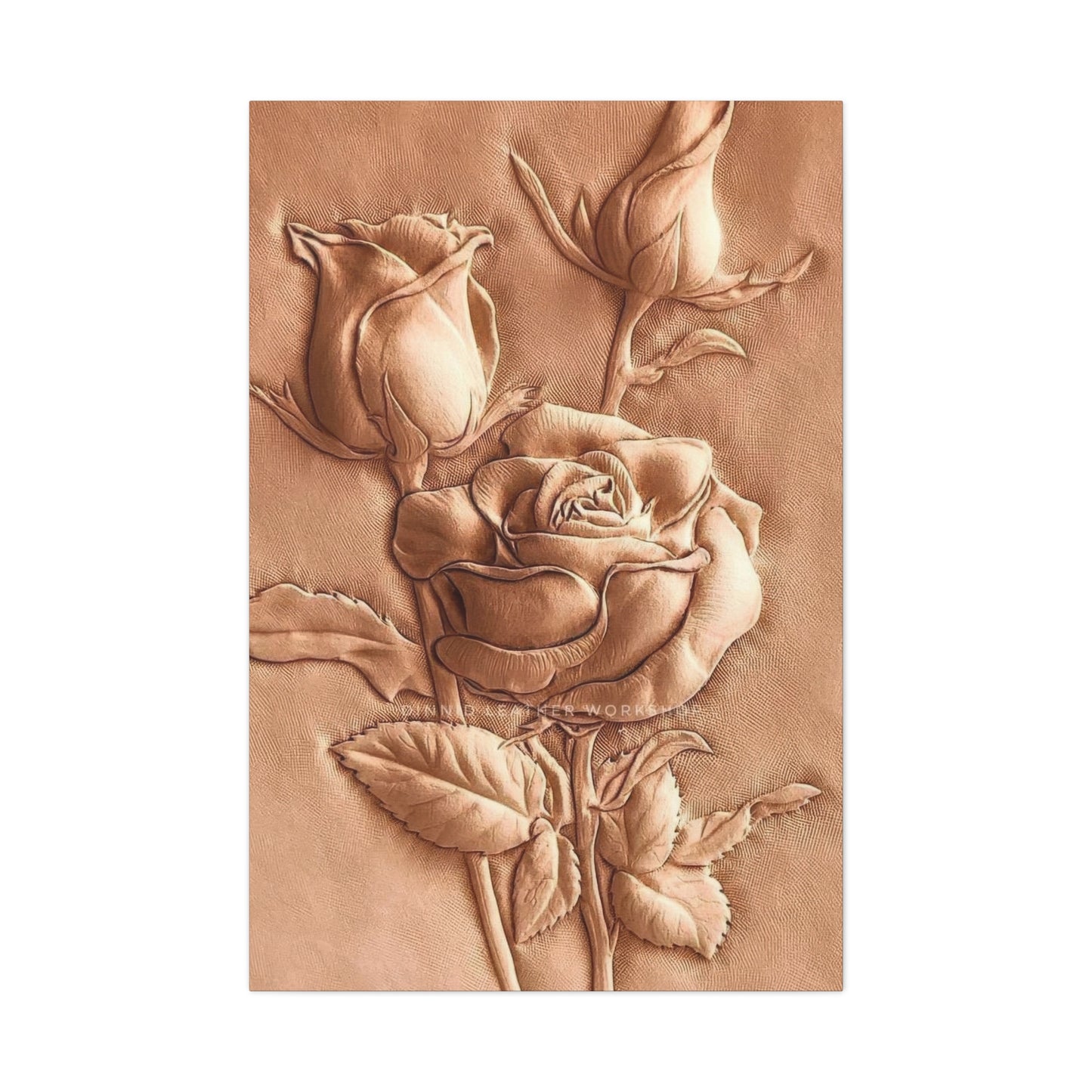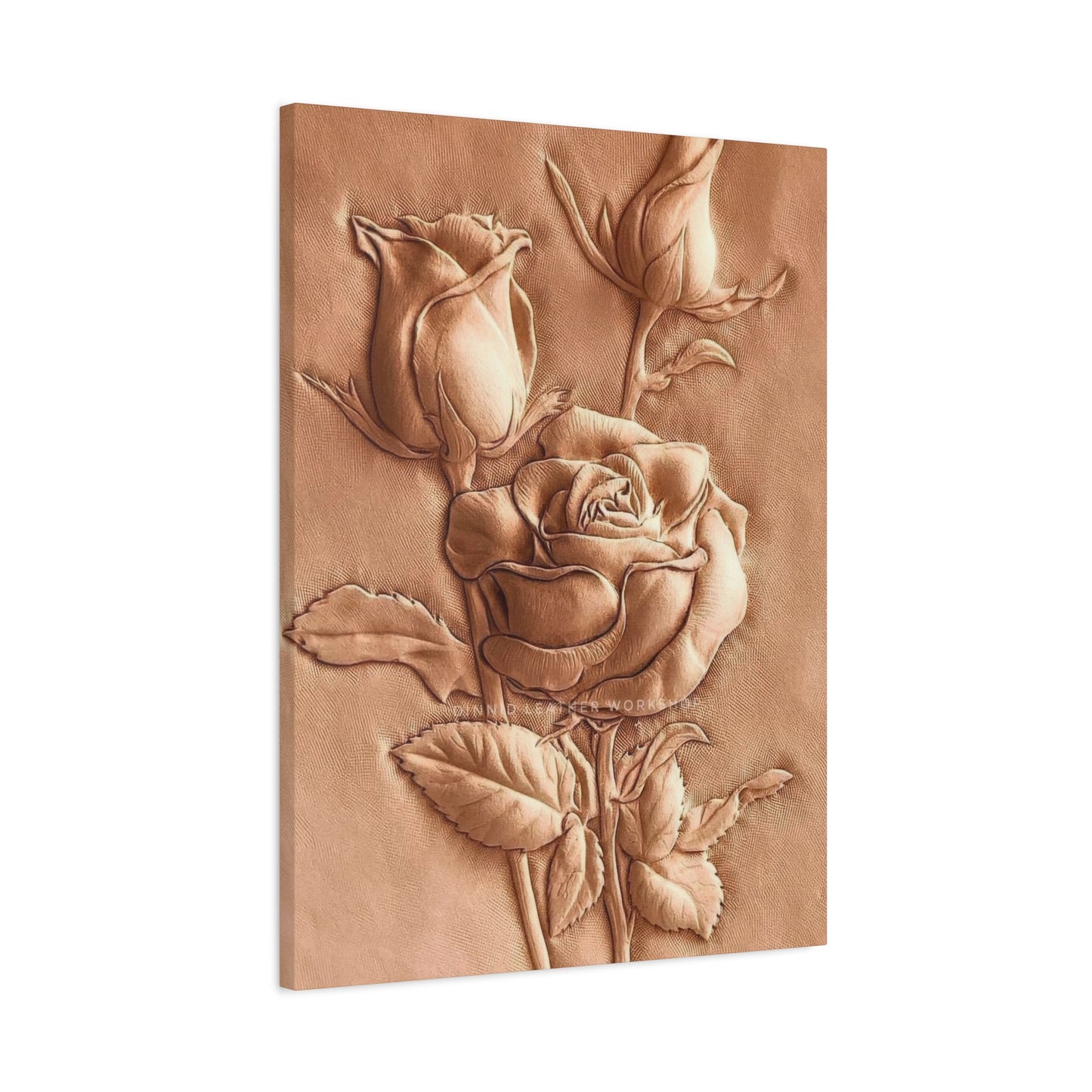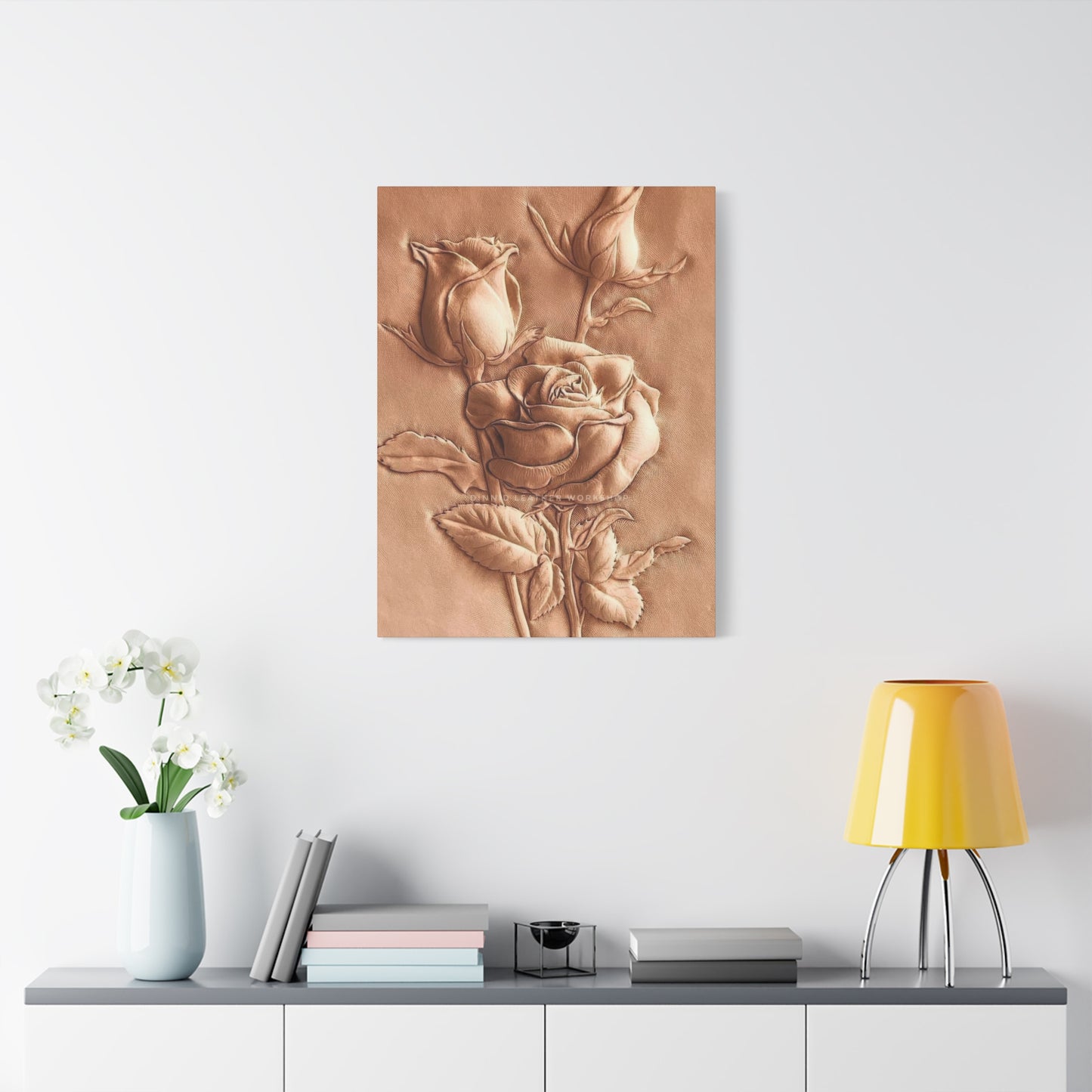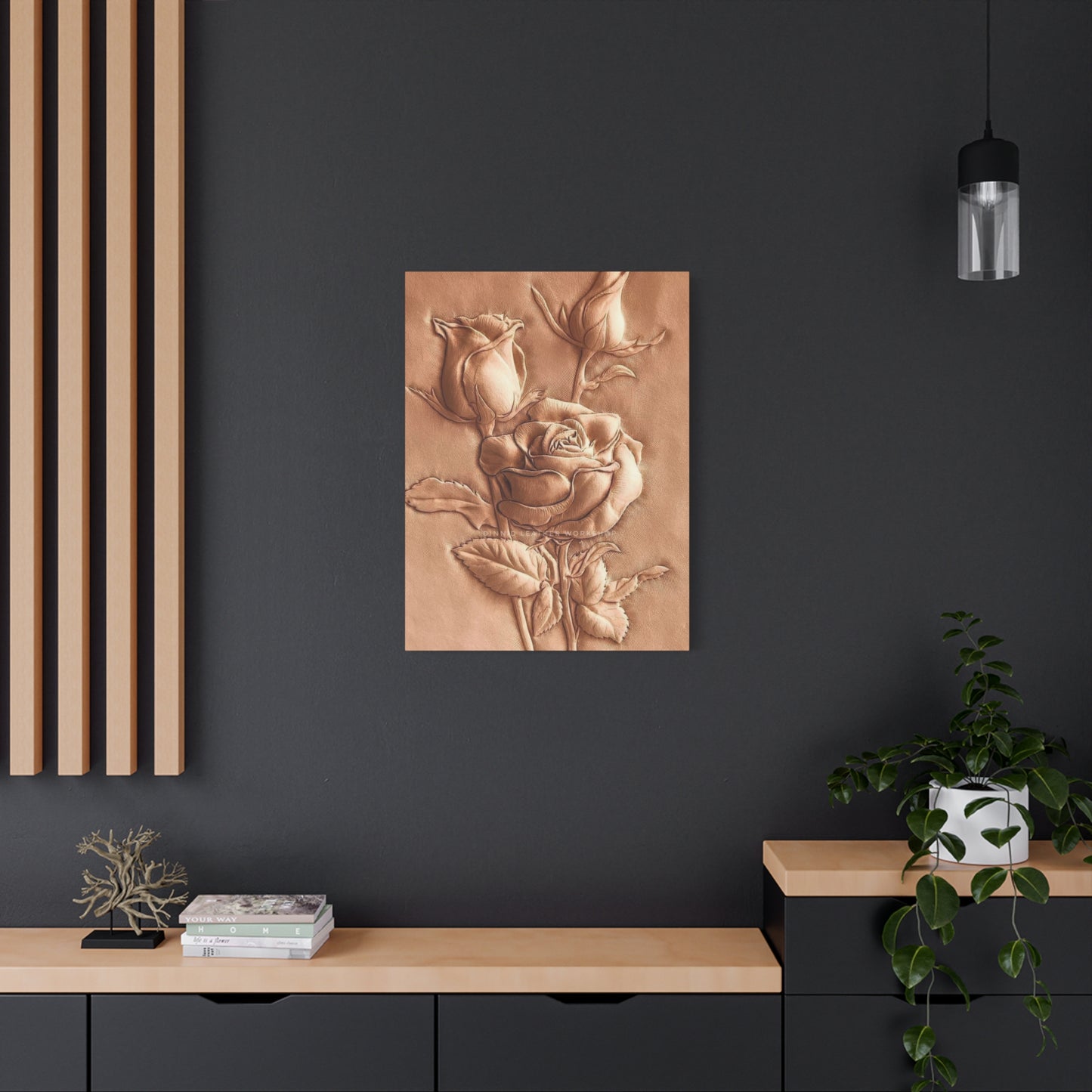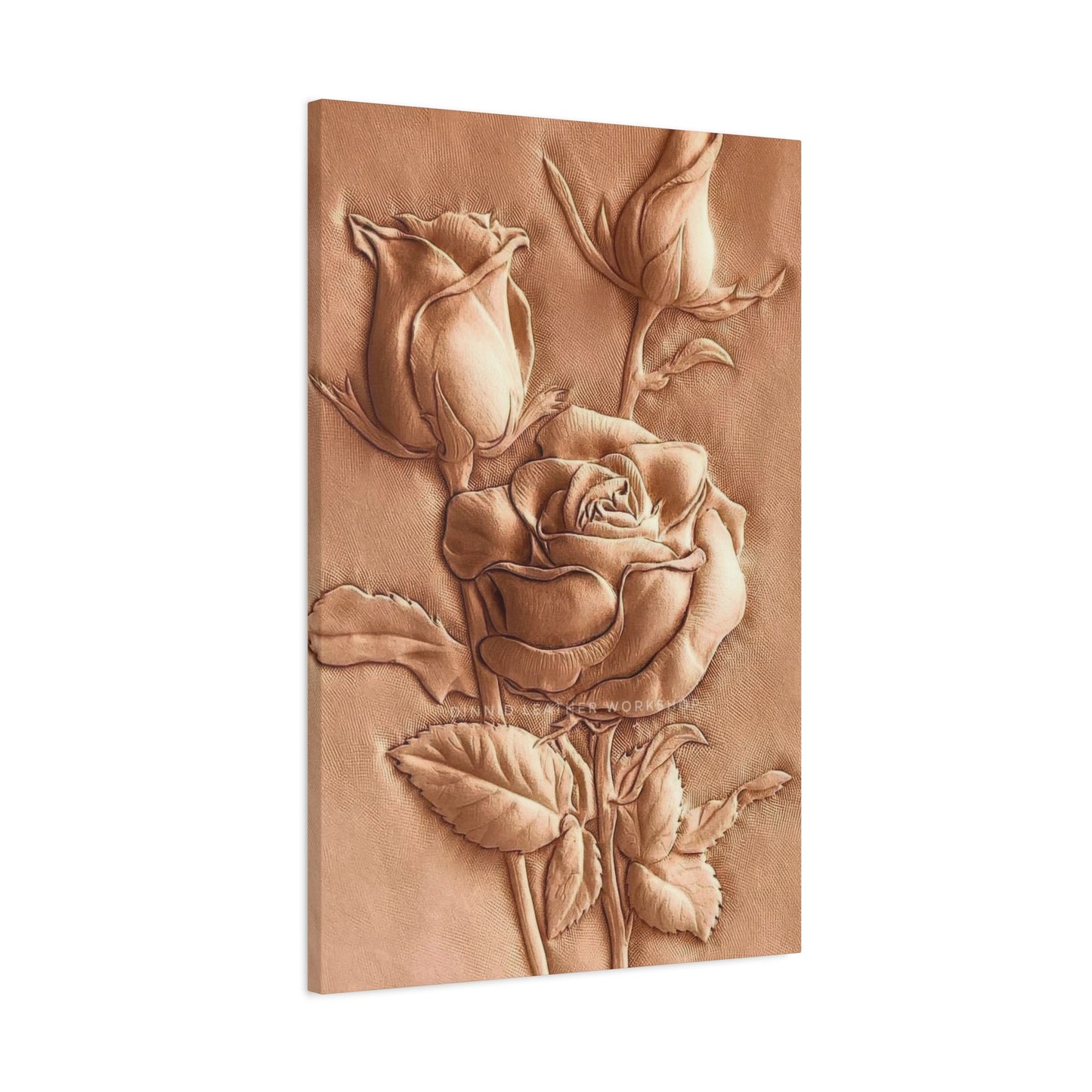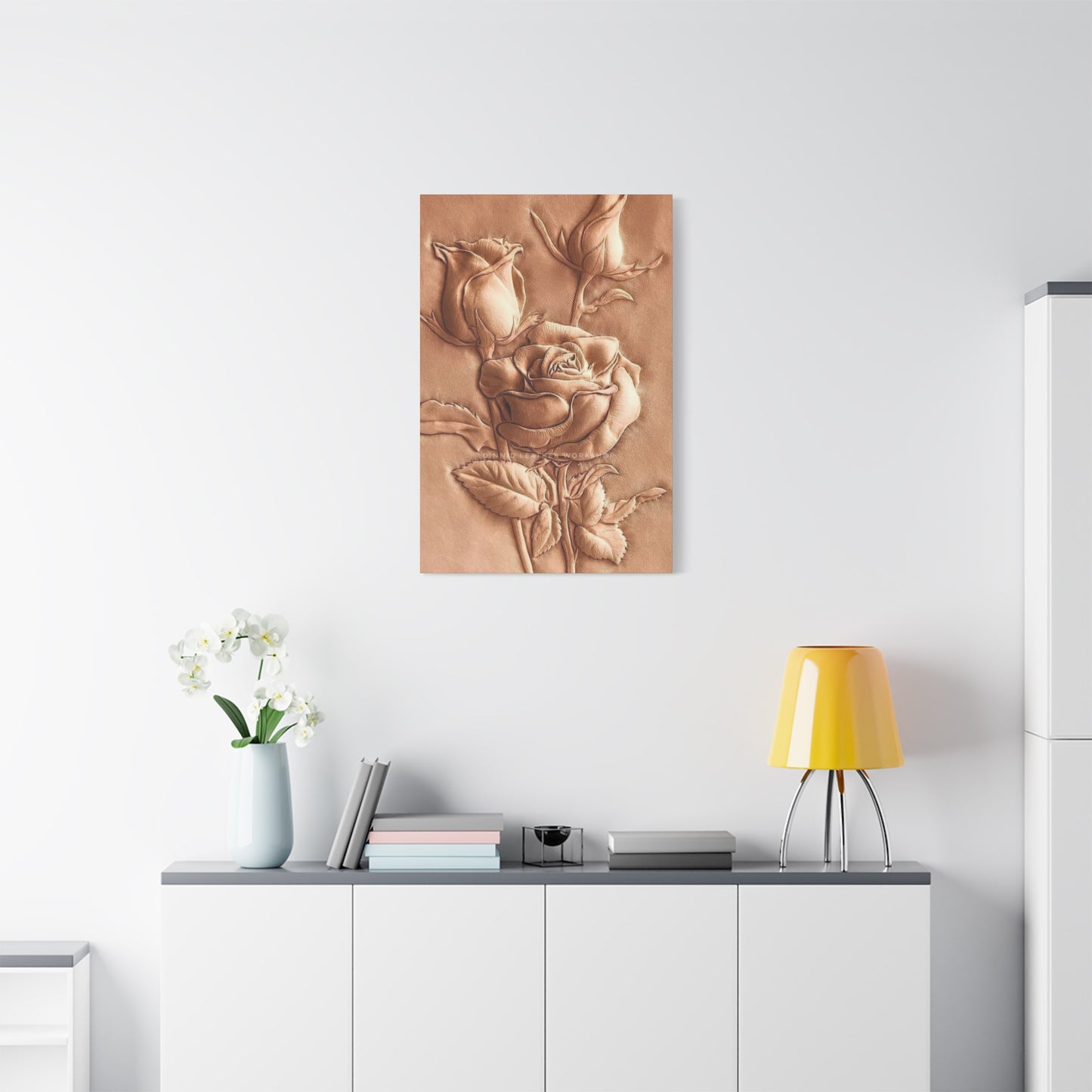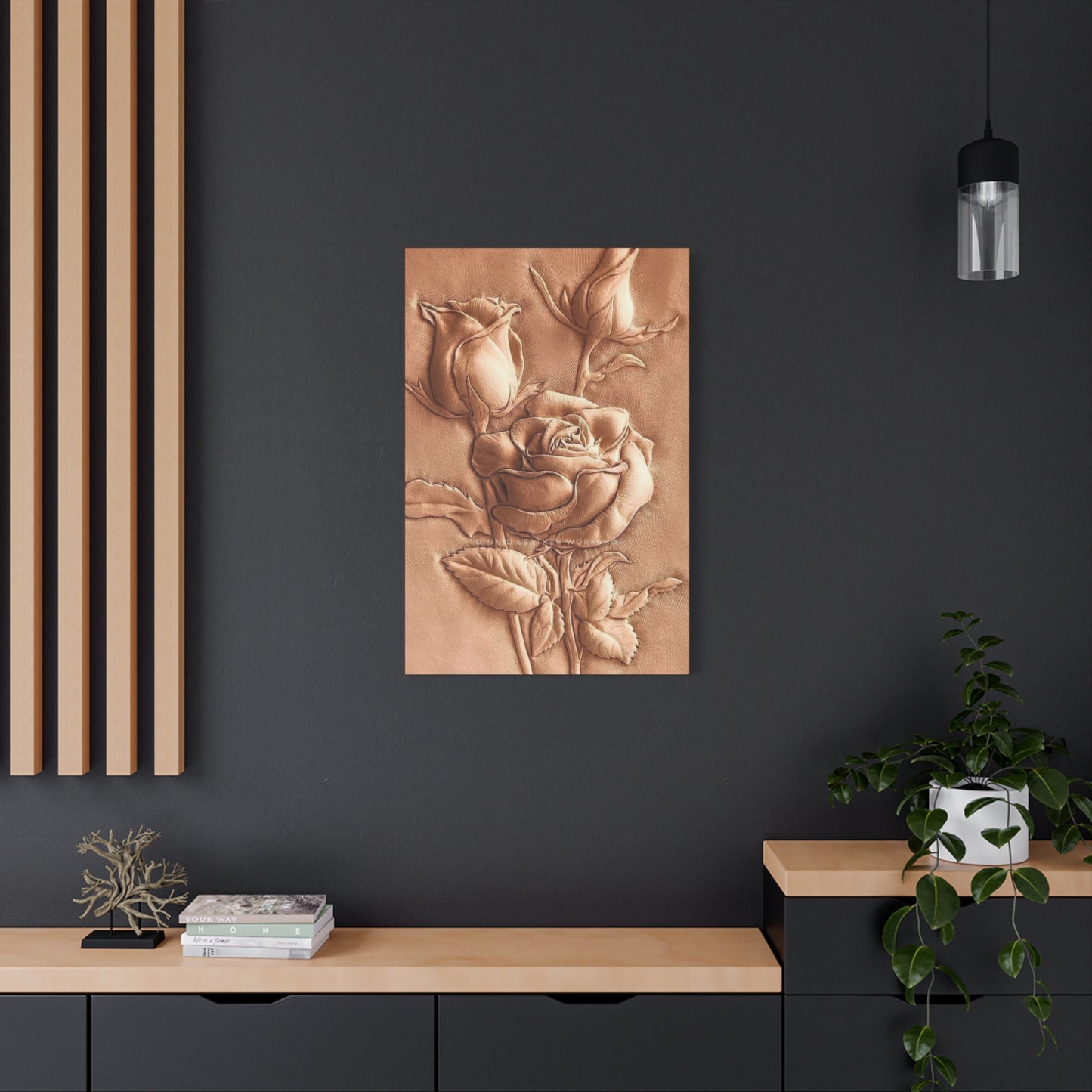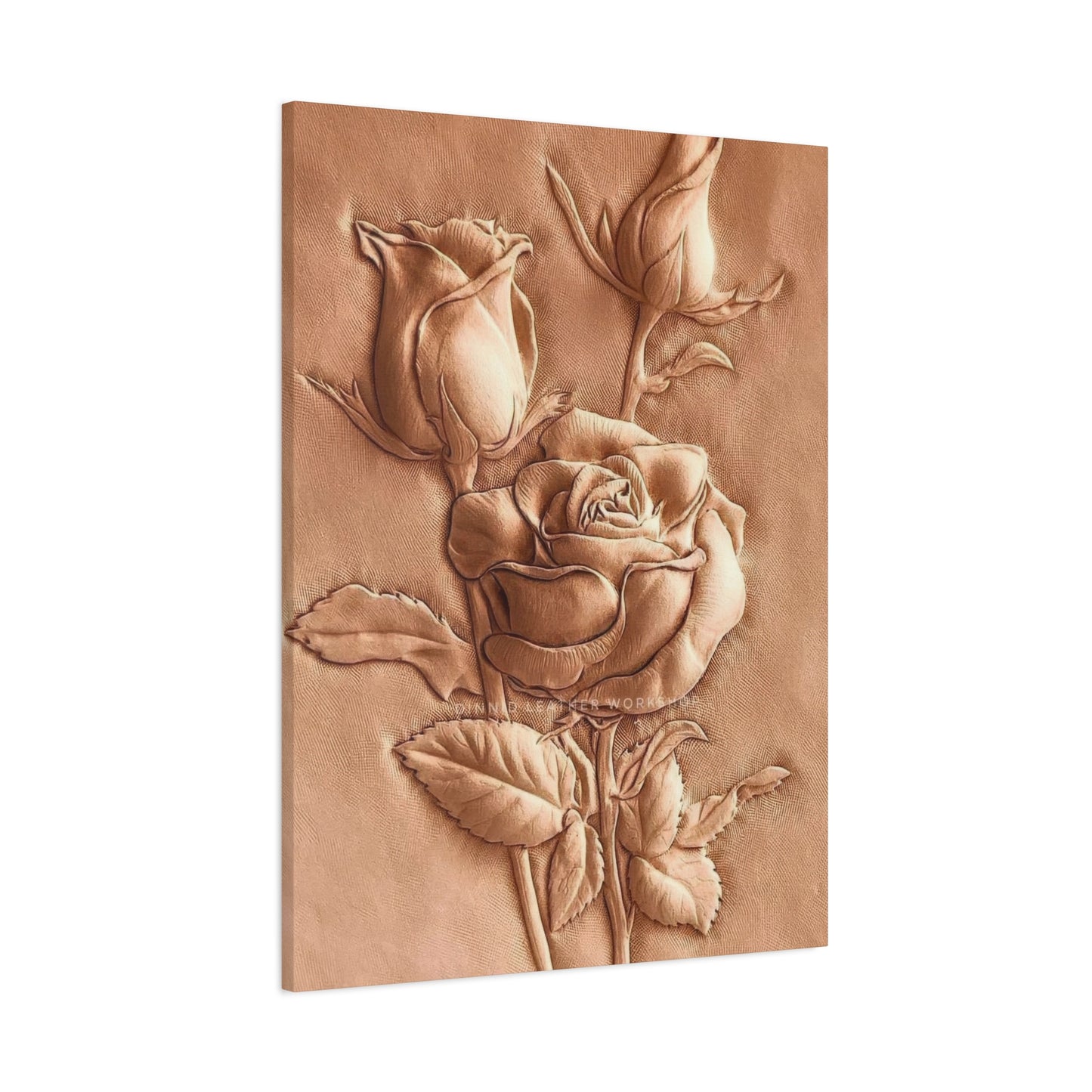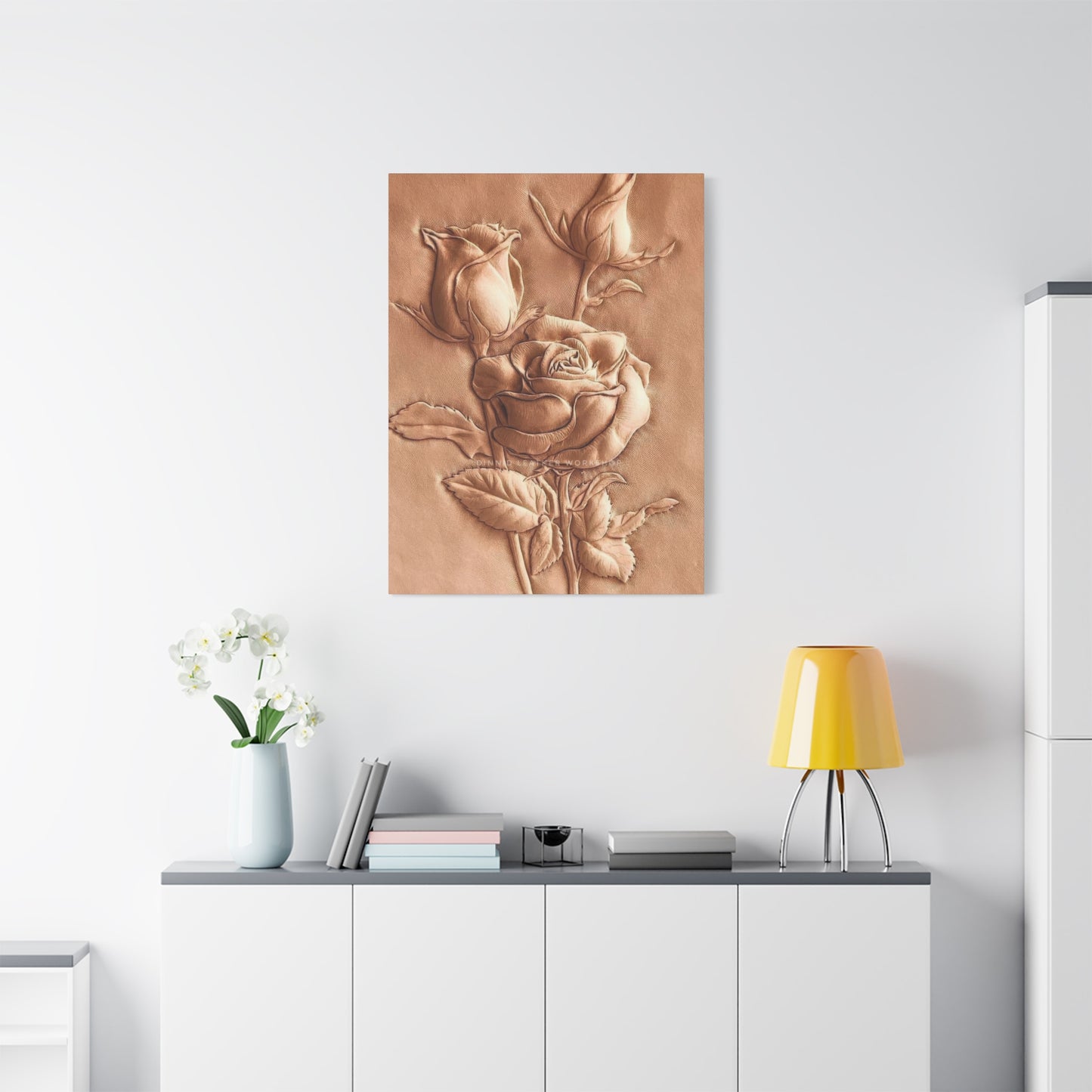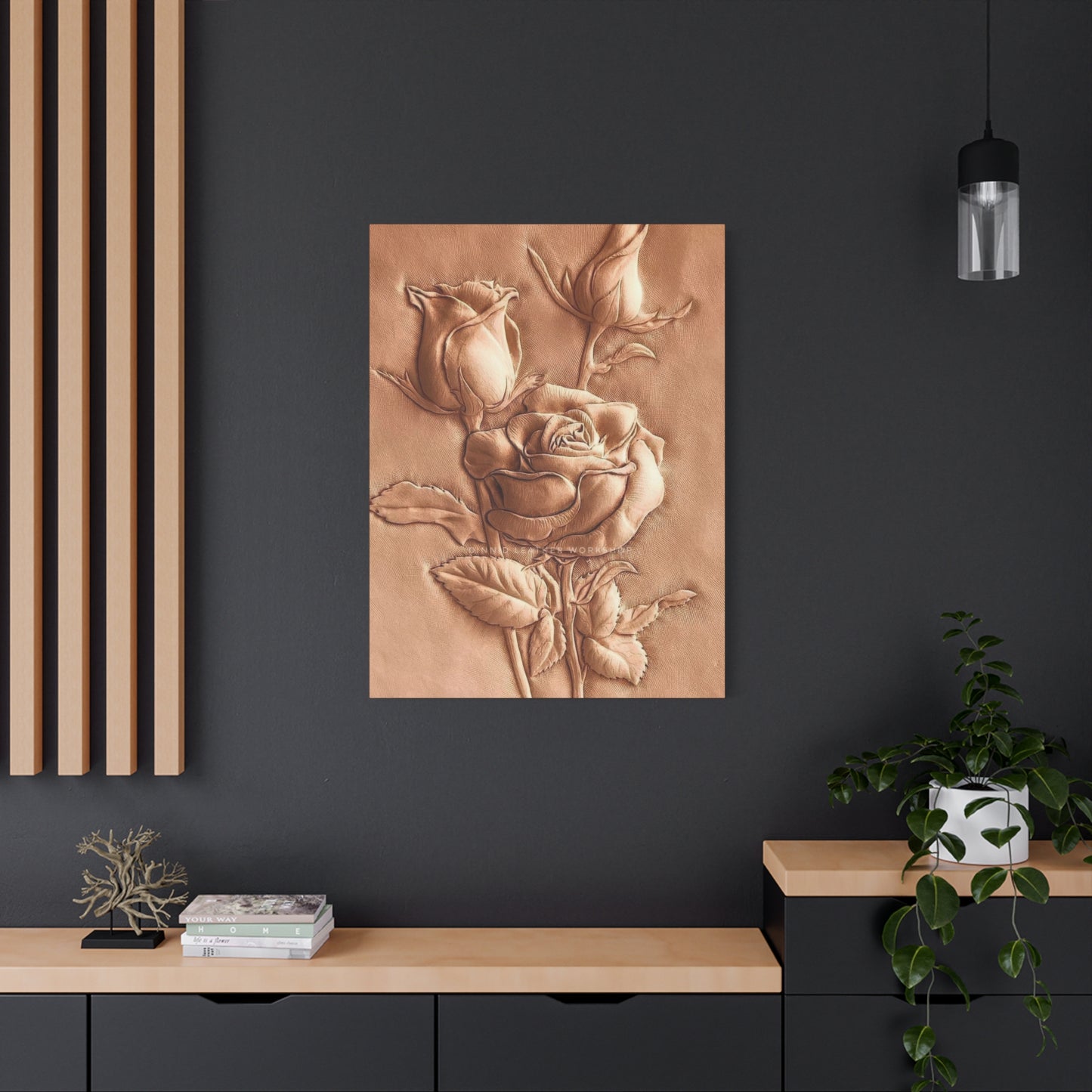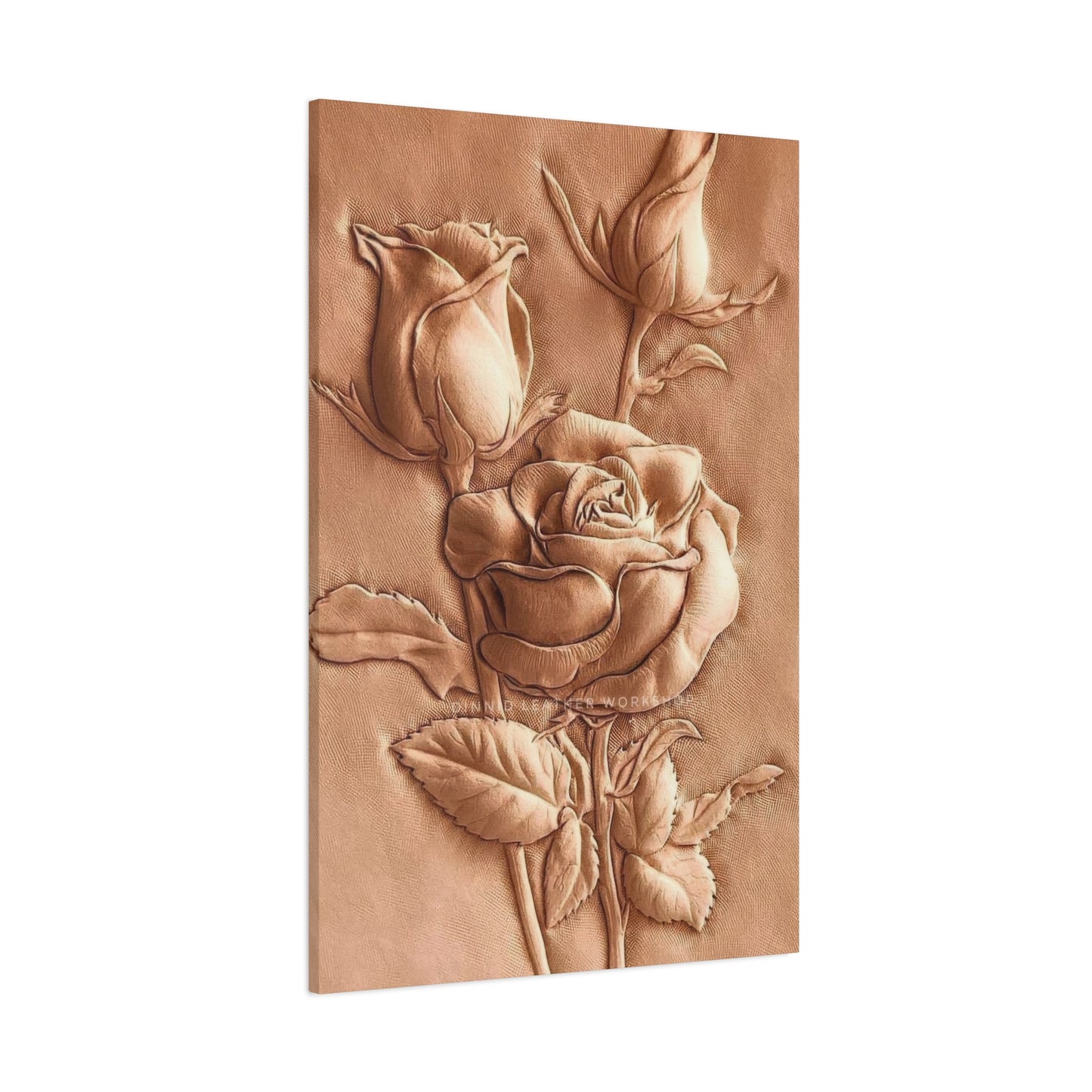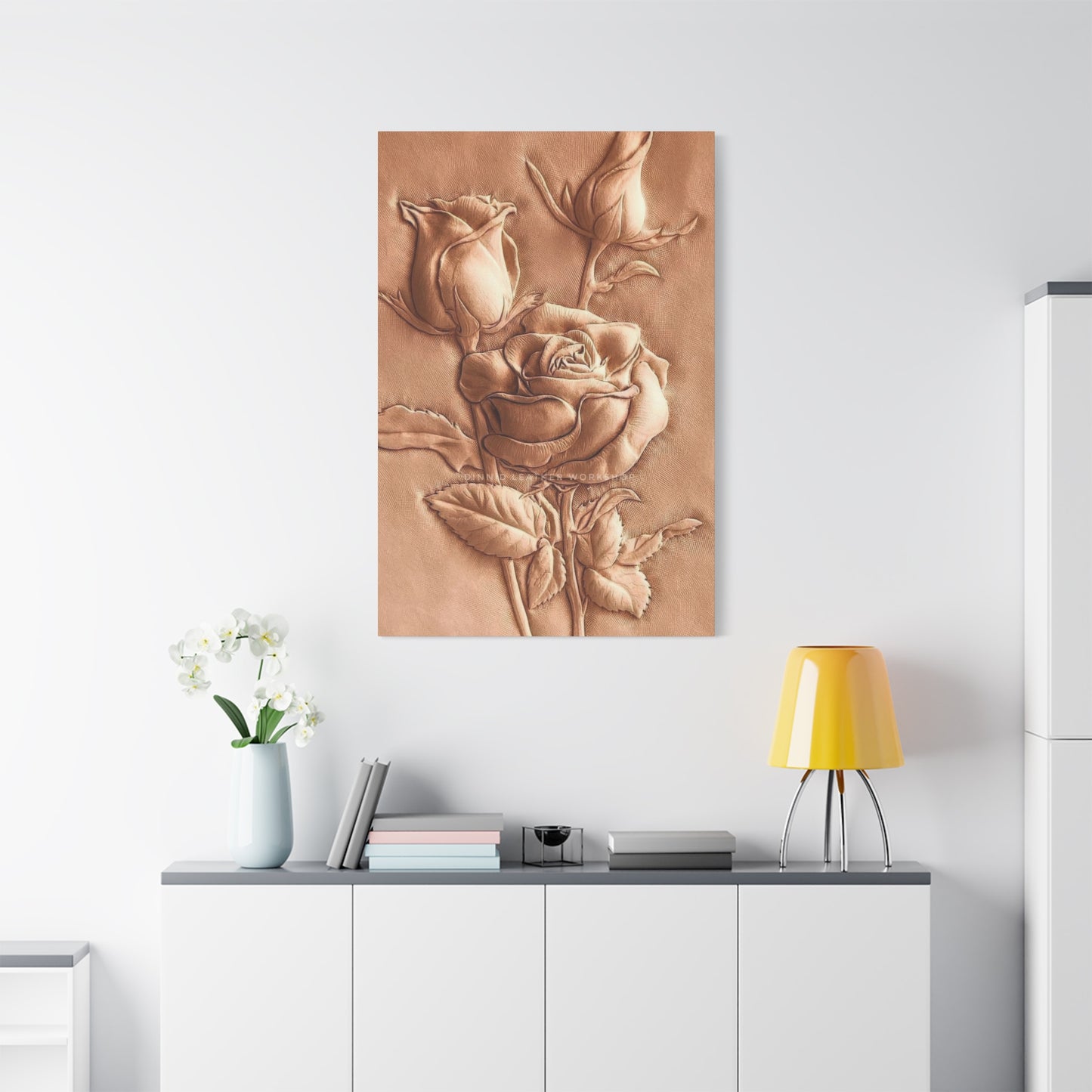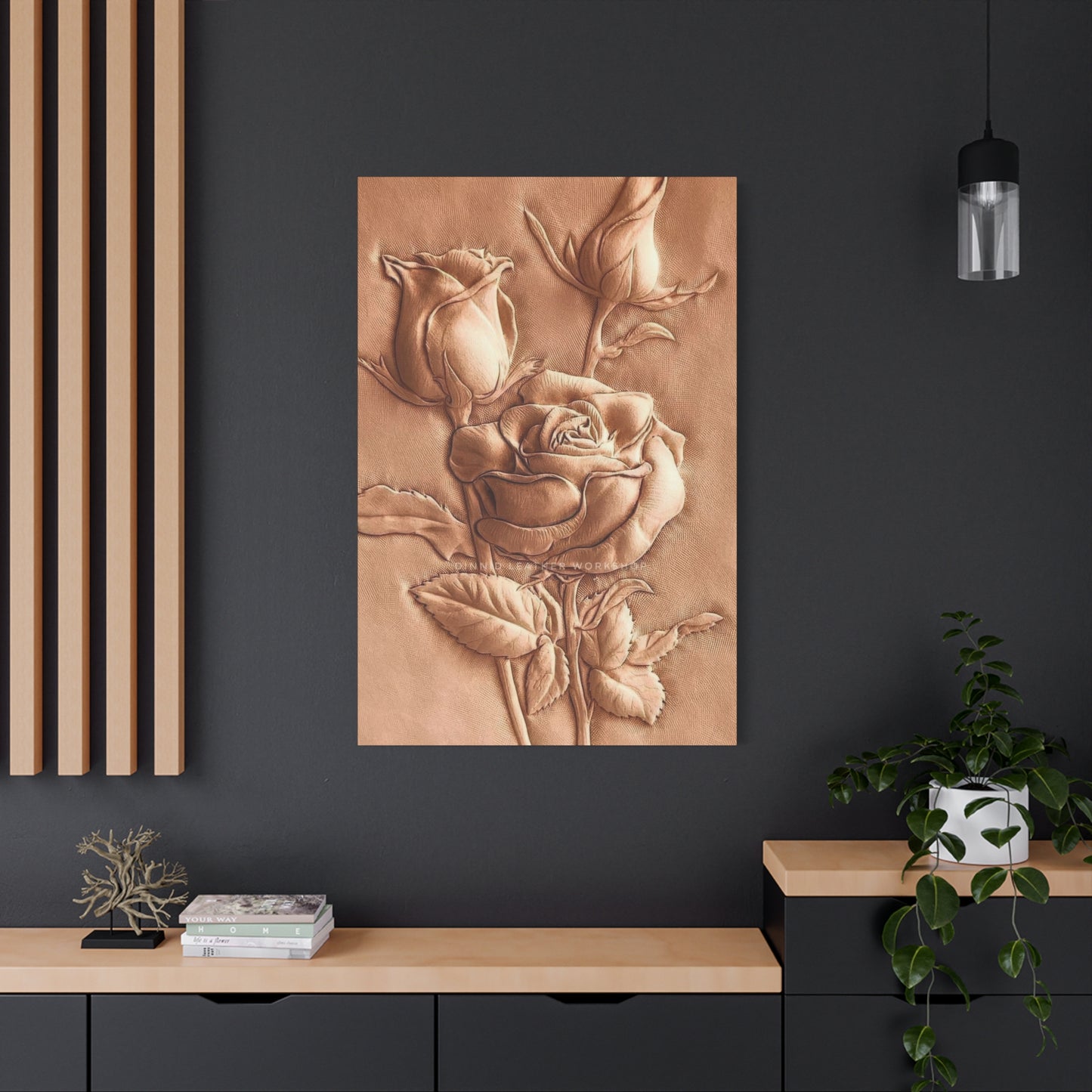Elevate Your Home Décor: A Complete Guide to Rose Flower Leather Wall Art
Rose flower leather wall art represents a stunning fusion of natural beauty and artisanal craftsmanship that has captivated homeowners and decorators for years. This distinctive form of artistic expression combines the timeless elegance of roses with the rich, tactile quality of leather, creating pieces that serve as conversation starters and focal points in any room. The process of creating rose leather artwork involves meticulous attention to detail, where skilled artisans carefully carve, emboss, or paint floral designs onto high-quality leather surfaces. The result is a three-dimensional effect that brings depth and sophistication to your walls, transforming ordinary rooms into extraordinary living environments.
The appeal of rose flower leather wall art lies in its versatility and durability. Unlike traditional canvas prints or paper-based artwork, leather pieces offer exceptional longevity and develop a beautiful patina over time, much like fine leather goods. The natural variations in leather texture and color ensure that each piece is truly one-of-a-kind, adding an element of exclusivity to your collection. Whether you prefer the classic look of deep burgundy roses against dark brown leather or the softer aesthetic of pale pink blooms on cream-colored hides, there's a style to match every taste and decor preference.
In recent years, the popularity of rose leather artwork has surged as homeowners seek unique alternatives to mass-produced prints and generic decorations. These pieces bridge the gap between traditional craftsmanship and contemporary aesthetics, making them suitable for a wide range of settings from rustic farmhouses to sleek urban apartments. The tactile nature of leather adds a sensory dimension that flat prints simply cannot match, inviting viewers to appreciate the artwork not just visually but through its texture and presence in the room.
Making Bold Statements with Rose Leather Artwork
Creating a powerful visual impact in your home requires thoughtful selection and placement of artistic elements, and rose flower leather art excels in this role. These pieces naturally draw the eye with their dimensional qualities and rich coloration, making them ideal focal points for living rooms, dining areas, or primary bedrooms. When selecting a statement piece, consider the scale of your room and the height of your ceilings. Larger leather artworks measuring four feet or more work beautifully in spacious areas with high ceilings, while medium-sized pieces suit standard residential rooms perfectly.
The positioning of your rose leather artwork significantly affects its impact. Hanging the piece at eye level ensures optimal viewing, but don't be afraid to experiment with placement to create dramatic effects. In rooms with architectural features like fireplaces or built-in shelving, positioning the artwork above these elements creates a cohesive focal point that anchors the entire room. The natural texture of leather catches light differently throughout the day, creating subtle shifts in appearance that keep the artwork interesting from morning to evening.
Color coordination plays a crucial role when using rose leather art as a statement piece. Deep red roses on dark leather create a sense of luxury and sophistication, perfect for formal settings or rooms with rich color schemes. Conversely, lighter rose tones on natural leather bring freshness and airiness to a room, working beautifully in casual or coastal-inspired settings. Consider the existing color palette in your room and choose artwork that either complements these tones or provides an intentional contrast that energizes the visual composition.
The frame or mounting method you choose for your rose leather artwork can enhance or detract from its statement-making potential. Simple, clean-lined frames in metals like bronze, copper, or black iron allow the artwork to take center stage without competition. Alternatively, shadow box framing creates depth and emphasizes the three-dimensional nature of leather art. Some pieces look stunning when mounted directly on the wall without frames, especially when the leather edges have been finished beautifully by the artisan.
Lighting considerations are essential when displaying statement leather artwork. Directional lighting from track lights or picture lights can highlight the texture and dimensionality of the piece, creating dramatic shadows that enhance visual interest. Natural light should be monitored carefully, as prolonged direct sunlight can fade leather over time. Position statement pieces where they receive indirect natural light during the day and can be illuminated by artificial lighting in the evening for maximum impact.
Enhancing Simplified Settings with Rose Leather Prints
Simplified, pared-down environments benefit tremendously from the addition of carefully chosen rose flower leather art. These settings, characterized by clean lines, neutral colors, and uncluttered surfaces, provide the perfect backdrop for the organic beauty and textural richness of leather floral artwork. The key to success in these environments is restraint and intentionality. Rather than filling walls with multiple pieces, select one or two exceptional examples of rose leather art that truly speak to you and allow them to shine without competition.
In simplified settings, the artwork often serves as the primary source of visual interest, making quality paramount. Look for pieces where the craftsmanship is evident in every detail, from the precision of the rose petal carving to the evenness of the leather conditioning. The natural imperfections in leather, such as subtle grain variations or slight color shifts, add character without overwhelming the clean aesthetic that defines these rooms. These organic variations provide just enough visual texture to keep simplified rooms from feeling sterile or cold.
The color palette of your rose leather prints should harmonize with the neutral foundation typical of simplified settings. Monochromatic pieces featuring roses in shades of cream, tan, or soft gray on natural leather backgrounds create a subtle, sophisticated look that enhances rather than dominates the room. If you want to introduce color, consider muted rose tones like dusty pink, mauve, or coral that add warmth without jarring contrast. Even in simplified settings, these gentle color introductions can create emotional resonance and visual warmth.
Size and proportion take on heightened importance in simplified environments where every element is visible and significant. A single large-scale rose leather artwork can serve as the room's artistic anchor, drawing the eye and providing a focal point that grounds the entire setting. The negative wall around the artwork becomes as important as the piece itself, creating breathing room that allows viewers to fully appreciate the craftsmanship and beauty of the leather work. This approach reflects traditional design principles found in various cultures where empty surrounding areas enhance the perceived value of the central object.
Placement within simplified settings should follow principles of balance and intentionality. Position your rose leather artwork where it can be appreciated without distraction, often on a primary wall that faces the main seating area or entry point. The height should allow for comfortable viewing from the most frequently used vantage points in the room. In bedrooms with simplified aesthetics, positioning the artwork above the headboard creates a serene focal point that's visible upon entering the room but doesn't overwhelm the restful atmosphere.
Floral Leather Artwork in Free-Spirited Settings
Free-spirited, eclectic environments embrace the organic beauty and artisanal quality of rose flower leather art with particular enthusiasm. These settings, characterized by rich textures, layered patterns, and globally inspired elements, provide ideal backdrops for the natural variations and handcrafted appeal of leather floral pieces. The key to successfully incorporating rose leather artwork into these environments lies in embracing abundance while maintaining visual cohesion through thoughtful arrangement and color coordination.
In free-spirited settings, rose leather art often appears alongside other natural materials like macramé, woven textiles, and carved wooden elements. This combination of textures creates depth and visual interest while celebrating artisanal craftsmanship across different mediums. The leather's durability and organic patina development align perfectly with the preference for items that age beautifully and gain character over time. Unlike synthetic materials that show wear negatively, leather's aging process adds to its beauty and authenticity.
Color plays a vital role in integrating rose leather artwork into these richly decorated environments. Earth tones dominate many free-spirited settings, making rose leather pieces in browns, tans, and natural shades feel right at home. However, these settings also embrace pops of vibrant color, so don't hesitate to select pieces featuring roses in deep burgundy, coral, or even unconventional colors like turquoise or gold leaf accents. The key is ensuring that the colors in your artwork appear elsewhere in the room, creating visual threads that tie the composition together.
Layering is a hallmark of free-spirited styling, and rose leather art lends itself beautifully to this approach. Rather than hanging a single piece in isolation, consider creating a gallery-style arrangement that combines your leather artwork with complementary pieces like vintage mirrors, woven wall hangings, or botanical prints. The varied textures and forms create a collected-over-time appearance that defines these eclectic environments. When layering, vary the sizes and shapes of pieces while maintaining some unifying element, whether it's a shared color palette, similar framing styles, or a common theme like nature-inspired artwork.
The handmade quality of rose leather art resonates deeply with the values underlying many free-spirited settings. These environments often celebrate sustainable practices, artisanal crafts, and items with stories behind them. When selecting leather artwork for these settings, seek out pieces from individual artists or small workshops where you can learn about the creation process and the maker's inspiration. This connection adds meaning beyond the visual appeal and aligns with the intentional, mindful approach to decorating that characterizes these settings.
Placement in free-spirited environments offers more flexibility than in formal settings. Don't feel constrained by traditional rules about centering artwork or maintaining specific heights. These eclectic settings embrace asymmetry and unexpected arrangements, so consider positioning your rose leather art in unconventional locations like above a window, in a corner grouping, or even on a slanted wall following a staircase. The organic nature of the floral imagery and the warmth of leather adapt well to these creative placement choices.
Preservation Methods for Leather Artwork
Proper maintenance ensures that your rose flower leather wall art remains beautiful for decades, developing a rich patina while avoiding damage or deterioration. Leather is a natural material that responds to its environment, making regular care essential for longevity. Understanding the characteristics of leather and implementing appropriate preservation practices will protect your investment and allow you to enjoy your artwork for years to come. The good news is that leather artwork requires relatively minimal maintenance compared to other art forms, but the care you do provide makes a significant difference.
Dust accumulation is the most common issue affecting leather artwork, particularly in textured or carved pieces where particles can settle into crevices. Regular dusting using a soft, dry microfiber cloth or a clean, soft-bristled brush prevents buildup that can dull the leather's appearance over time. Dust weekly or bi-weekly depending on your home's environment, always using gentle strokes that follow the direction of any carved or embossed patterns. Avoid using feather dusters or rough cloths that might scratch the leather surface or catch on raised design elements.
Conditioning leather artwork maintains its suppleness and prevents cracking or drying, especially in climate-controlled homes where humidity levels fluctuate. Apply a high-quality leather conditioner specifically designed for finished leather approximately twice per year, or more frequently in very dry climates. Test any product on an inconspicuous area first to ensure it doesn't alter the color or finish. Apply conditioner sparingly with a soft cloth, working it into the leather with circular motions, then buff away any excess. This process nourishes the leather fibers and helps maintain the rich color and texture that make these pieces so appealing.
Environmental factors significantly impact leather artwork longevity. Position your pieces away from direct sunlight, which can fade colors and dry out the leather, causing cracking or brittleness. Similarly, avoid hanging leather art near heating vents, radiators, or fireplaces where heat can cause excessive drying. High humidity environments pose different challenges, potentially encouraging mold growth or causing leather to become overly soft. Maintain indoor humidity levels between 40 and 60 percent for optimal leather preservation, using humidifiers or dehumidifiers as needed based on your climate.
Stains and spills require immediate attention to prevent permanent damage to leather artwork. Blot any liquid spills immediately with a clean, absorbent cloth, never rubbing which can spread the stain or damage the leather surface. For water-based spills, blotting may be sufficient, followed by air drying away from heat sources. Oil-based stains are more challenging and may require professional leather cleaning products or services. Always test cleaning products on hidden areas before applying them to visible portions of your artwork.
Long-term storage of leather artwork requires careful preparation to prevent damage during periods when pieces are not displayed. Clean and condition the leather thoroughly before storage, ensuring it's completely dry. Wrap artwork in acid-free tissue paper or unbleached muslin, avoiding plastic which can trap moisture and encourage mold growth. Store pieces flat or upright in a climate-controlled environment away from direct contact with concrete floors or exterior walls where temperature and humidity fluctuations are greatest. Check stored items periodically to ensure no issues have developed.
Professional restoration may be necessary for vintage or damaged leather artwork. If your piece shows signs of significant cracking, color loss, or structural damage, consult with a professional leather conservator who can assess the condition and recommend appropriate treatments. Attempting DIY repairs on valuable or sentimental pieces often causes more harm than good, so err on the side of caution and seek expert guidance when dealing with serious damage or deterioration.
Sources for Distinctive Rose Leather Artwork
Finding truly exceptional rose flower leather wall art requires knowing where to look and how to evaluate quality. The market offers everything from mass-produced pieces to one-of-a-kind artisan creations, with significant variations in craftsmanship, materials, and price points. Understanding the landscape helps you make informed decisions and discover pieces that align with your aesthetic preferences, quality standards, and budget while supporting the types of makers and businesses that resonate with your values.
Artisan markets and craft fairs provide excellent opportunities to discover unique rose leather artwork while meeting the creators directly. These venues allow you to examine craftsmanship up close, ask questions about techniques and materials, and often commission custom pieces tailored to your specific requirements. Many leather artists attend regional craft shows throughout the year, bringing portfolios of completed work and accepting orders for custom creations. The personal connection you establish with the artist adds meaning to your purchase and often results in better customer service and potential future collaborations.
Online marketplaces specializing in handmade goods have democratized access to artisan leather work, connecting creators with customers worldwide. Platforms focused on handcrafted items typically include detailed product descriptions, multiple photographs from various angles, and customer reviews that help you assess quality before purchasing. When shopping through these channels, examine photographs carefully, looking for crisp detail in the leather work, even coloring, and professional finishing. Read seller reviews and policies regarding returns, especially for higher-priced items, and don't hesitate to contact sellers with specific questions about their work.
Independent art galleries focusing on functional art or decorative objects increasingly feature leather artwork as collectors and designers recognize its appeal. Gallery representation often indicates a certain quality threshold, as curators select artists whose work meets their standards for craftsmanship and artistic merit. Purchasing through galleries typically costs more than buying directly from artists, but the gallery's vetting process and often-superior presentation can make the premium worthwhile. Galleries also frequently host artist events where you can meet leather artists, learn about their processes, and view multiple examples of their work in person.
Custom commissions offer the ultimate in personalization, allowing you to work directly with a leather artist to create a piece perfectly suited to your vision. When commissioning rose leather artwork, prepare reference images showing the style, colors, and overall aesthetic you prefer. Discuss dimensions, mounting options, and timeline expectations upfront, and request a detailed written agreement outlining all terms including deposit requirements, completion dates, and what happens if either party needs to cancel. The best commissions result from clear communication and realistic expectations on both sides.
Antique and vintage shops occasionally feature older examples of leather artwork, including rose motifs that reflect different eras and artistic movements. These pieces offer historical interest and often showcase techniques or styles no longer commonly practiced. When considering vintage leather art, carefully assess condition, looking for signs of cracking, fading, or structural damage that might require restoration. Original vintage pieces in good condition can be excellent investments that add character and authenticity to your collection while supporting sustainable shopping practices through reuse.
Estate sales and auctions sometimes yield unexpected treasures, including high-quality leather artwork at attractive prices. These venues require patience and a willingness to sift through many items to find gems, but the effort can be rewarded with significant finds. Bring a knowledgeable friend or do thorough research before auction day to help you make informed bidding decisions. Remember that auction items are typically sold as-is without guarantees, so inspect potential purchases carefully and factor restoration costs into your maximum bid.
Social networking platforms have become valuable tools for discovering emerging leather artists who may not yet have gallery representation or substantial online shop presence. Many artists share their creative process, completed works, and availability through these channels, building followings of collectors who appreciate their particular aesthetic. Following hashtags related to leather art, floral artwork, or handmade decorative objects helps you discover new artists whose work resonates with you. Direct messaging allows easy communication about purchasing or commissioning work.
Creating Your Own Rose Leather Artwork
Crafting your own rose flower leather wall art offers tremendous satisfaction and allows you to create truly personalized pieces that reflect your unique vision. While leather working requires some specialized tools and materials, the basic techniques for creating floral artwork are accessible to dedicated beginners willing to invest time in learning and practice. Starting with simple projects builds skills and confidence before progressing to more complex designs, and the journey of skill development becomes part of the artwork's meaning when you display your own creations.
Selecting appropriate leather is the crucial first step in any leather art project. Vegetable-tanned leather works best for carving, tooling, and embossing techniques commonly used in creating floral designs, as its firm structure holds detail well while accepting dyes and finishes beautifully. Thickness matters significantly, with leather measuring between 2 and 4 millimeters providing optimal balance between workability and structural integrity for wall art. Purchase leather from reputable suppliers who can provide information about the hide's origin, tanning method, and recommended uses.
Basic leather working tools for rose artwork include swivel knives for cutting outlines, various bevelers and modeling tools for creating dimension, and backgrounding stamps for adding texture around the floral design. A poly board or granite slab provides an ideal working surface that won't damage tools while offering firm support for the leather. Case the leather before tooling by moistening it with a sponge and clean water until it returns to its natural color, creating the perfect consistency for accepting tooling impressions. Properly cased leather should feel cool and slightly damp but not wet.
Designing your rose artwork begins with sketching or selecting a reference image that appeals to you. Transfer the design to the leather using tracing film and a stylus, going over the lines firmly enough to leave visible impressions but not so hard as to cut through the leather. Start with simple, single-rose designs before attempting complex arrangements with multiple blooms and leaves. Consider the leather's natural variations and any distinctive markings, incorporating these characteristics into your design rather than fighting against them.
The tooling process creates the dimensional quality that makes leather floral art distinctive. Use your swivel knife to cut along the traced lines, holding the blade at a consistent angle and making smooth, continuous cuts. Beveling tools pressed along the cut lines create slopes that define petal edges and create shadowy depth. Modeling tools shape individual petals and leaves, giving them realistic curves and natural forms. Background tools add texture to areas surrounding the roses, making the flowers appear to rise from the leather surface.
Coloring leather artwork offers multiple approaches, each creating different effects. Spirit-based leather dyes penetrate deeply, creating rich, permanent color that won't rub off but can't be lightened if you apply too much. Water-based acrylics sit more on the surface, allowing easier correction but requiring sealing to prevent rubbing. Antique finishes applied and then wiped back create aged, dimensional appearance by settling into tooled recesses while highlighting raised areas. Experiment with color techniques on scrap leather before applying them to finished pieces.
Finishing protects your completed artwork and enhances the leather's natural beauty. Allow all dyes and paints to dry completely before applying finish, typically 24 hours minimum. Leather finishes range from matte to high gloss, with medium sheen finishes offering the most versatile appearance for most decorative applications. Apply finish in thin, even coats, allowing each to dry before adding additional layers. Three to four thin coats typically provide adequate protection for wall art that won't receive handling.
Mounting your completed rose leather artwork professionally presents your work to best advantage. Backing the leather with firm board prevents sagging and provides structure for hanging. Stretch the leather smoothly over the backing, securing it on the back with appropriate adhesive, being careful to avoid visible wrinkles or bubbles on the display side. Add hanging hardware appropriate to the piece's weight, ensuring secure attachment that will support the artwork safely. Framing remains optional but can enhance presentation, particularly for pieces intended for formal settings.
Learning resources for leather working are abundant and accessible. Books dedicated to leather carving and tooling provide comprehensive instruction with step-by-step photography and project patterns. Online tutorials and videos offer visual demonstration of techniques that can be challenging to understand from written descriptions alone. Local leather working guilds and craft groups provide in-person instruction and community support for developing skills. Many leather supply companies offer classes and workshops, sometimes free with purchase of starter kits.
Combining Rose Leather Artwork with Wooden Furnishings
The natural affinity between rose flower leather art and wooden furniture creates harmonious combinations that bring warmth and organic beauty to living environments. Both materials share earthy origins and develop character through aging, making them natural partners in creating cohesive, inviting rooms. Understanding how different wood tones, finishes, and furniture styles interact with various leather art pieces helps you create balanced, sophisticated arrangements that highlight the best qualities of both elements.
Wood tone coordination significantly impacts the success of pairing leather artwork with wooden furniture. Rich, dark woods like walnut, mahogany, or cherry create dramatic backdrops for rose leather art featuring lighter tones or contrasting colors. The depth of dark wood frames or furniture pieces makes rose artwork with cream, tan, or soft pink tones appear luminous by comparison, creating elegant contrast that draws the eye. These combinations work beautifully in traditional or transitional settings where richness and depth are desired aesthetic qualities.
Medium-toned woods including oak, teak, and maple offer versatile foundations that work with nearly any rose leather artwork color palette. These wood tones neither overwhelm nor fade into the background, providing balanced support that allows the artwork to take center stage without competition. The natural grain patterns in medium woods add subtle visual interest without dominating the composition. This versatility makes medium-toned wood furniture particularly suitable for rooms where you may want to change artwork seasonally or periodically without requiring complete furniture replacement.
Light woods such as pine, birch, or blonde maple create fresh, casual atmospheres that pair beautifully with rose leather art in natural tones or soft pastels. The combination feels airy and approachable, perfect for casual living areas, breakfast nooks, or bedrooms where relaxation is paramount. Light wood's informal quality balances the inherent sophistication of leather art, creating spaces that feel both refined and comfortable. This pairing works particularly well in coastal, Scandinavian-inspired, or cottage settings where brightness and simplicity reign.
Wood finish affects how leather artwork reads in relation to furniture pieces. High-gloss finishes on furniture create formal, polished appearances that pair well with carefully finished leather art in traditional or formal styles. Satin finishes offer moderate sheen that works across various design aesthetics, from transitional to contemporary. Matte or oiled finishes emphasize wood's natural character and pair beautifully with rustic or naturally finished leather artwork, creating cohesive organic compositions that celebrate materials in their most authentic states.
Furniture style influences optimal artwork placement and selection. Traditional furniture with carved details and ornate elements calls for rose leather art with similar attention to detail and classical composition. Modern furniture's clean lines and simplified forms benefit from leather artwork that shares these characteristics, perhaps featuring stylized or abstract rose interpretations rather than highly detailed realistic renderings. Rustic furniture pairs naturally with leather art showing natural edge or intentionally casual finishing that echoes the furniture's informal character.
Positional relationships between wooden furniture and rose leather artwork require thoughtful consideration. Artwork hung above substantial furniture pieces like sideboards, credenzas, or console tables should be proportionate to the furniture below, typically measuring two-thirds to three-quarters the width of the furniture piece. This proportion creates visual balance and ensures the artwork appears anchored rather than floating awkwardly. Leave adequate breathing room between the furniture top and the artwork's bottom edge, typically 6 to 12 inches depending on scale.
Color bridging through accessories helps tie together wooden furniture and rose leather artwork into cohesive compositions. Select decorative objects placed on wooden furniture surfaces that pick up colors from your leather art, creating visual connections that lead the eye around the room. A wooden bowl in tones matching your leather artwork's background, or textiles featuring rose colors echoed in the art, build these important bridges. These touches needn't be literal matches but should share tonal qualities that create harmony.
Symbolic Meanings in Rose Leather Artwork
Rose flower leather wall art carries layers of symbolic meaning that extend beyond mere decorative appeal, adding emotional and cultural resonance to these beautiful pieces. Understanding the symbolism embedded in rose imagery enriches appreciation of the artwork and can guide selection of pieces that align with personal values, memories, or aspirations. The combination of roses' traditional meanings with leather's associations creates unique symbolic dimensions that make these artworks particularly meaningful for many collectors and homeowners.
Roses have symbolized love, beauty, and passion across cultures for millennia, making them instantly recognizable emblems of deep human emotions. Different rose colors carry distinct meanings that leather artists often leverage in their work. Red roses universally represent romantic love and desire, making leather artwork featuring crimson blooms popular for bedrooms or as anniversary gifts. Pink roses symbolize grace, gentility, and admiration, creating gentler emotional resonances appropriate for wider contexts. White roses signify purity, innocence, and new beginnings, often chosen for nurseries or to commemorate significant life transitions.
Yellow roses convey friendship, joy, and caring, making them suitable for common areas where family and friends gather. Orange roses represent enthusiasm and desire, bringing energetic symbolism to creative or active areas. Lavender roses suggest enchantment and love at first sight, adding romantic whimsy to intimate settings. Black or deep purple roses, while not found in nature, symbolize farewell or the ending of things, sometimes chosen by those processing loss or marking major life changes. Understanding these color meanings helps you select rose leather artwork that communicates desired emotional tones.
The rose's layered petals have inspired philosophical interpretations about the unfolding of consciousness, spiritual development, and the revelation of hidden truths. Medieval and Renaissance symbolism often depicted roses as representing the soul's journey toward enlightenment, with each petal layer symbolizing deeper levels of understanding. This mystical dimension adds contemplative depth to rose leather artwork, particularly pieces that emphasize the flower's spiral structure or reveal the heart of the bloom. Such artwork can serve as meditation focuses or reminders of life's deeper mysteries.
Leather itself carries symbolic weight derived from its origins and characteristics. As processed animal hide, leather connects to themes of transformation, protection, and durability. The tanning process that converts perishable skin into lasting material symbolizes alchemy and change, making leather an appropriate medium for artwork celebrating transformation or permanence. Leather's protective qualities, historically used in armor and shelters, suggest safety and security. Displaying leather artwork can unconsciously evoke these protective associations, contributing to feelings of home as sanctuary.
The craftsmanship required to create quality rose leather artwork symbolizes dedication, skill, and the value of handmade objects in an increasingly mass-produced world. Choosing handcrafted leather art makes a statement about valuing artisanal traditions and human creativity. This choice reflects priorities that extend beyond aesthetics into ethics and lifestyle philosophy, making the artwork a representation of personal values as much as decorative preference.
Cultural variations in rose symbolism add additional interpretive layers for those with specific heritage connections. In Persian culture, roses represent the soul and appear frequently in poetry and spiritual texts as metaphors for divine love and beauty. Middle Eastern traditions associate roses with paradise gardens and heavenly bliss. Western traditions link roses to various saints and religious figures, particularly in Christian iconography. Eastern cultures, while not historically focused on roses, have adopted them with unique interpretations that blend with indigenous flower symbolism. Understanding these cultural dimensions enriches appreciation of rose leather artwork's global resonance.
The rose's dual nature, combining delicate beauty with protective thorns, symbolizes life's complexity and the necessity of balancing vulnerability with self-protection. Leather artwork that includes stems and thorns alongside blooms engages this symbolism more directly, suggesting maturity and awareness of life's harder realities alongside its beauty. Such pieces resonate particularly with those who appreciate art that acknowledges complexity rather than offering simplistic prettiness.
Personal symbolism often supersedes universal meanings, as individuals attach specific memories and associations to roses and leather artwork. A particular rose color might recall a childhood garden, a significant gift, or a meaningful relationship. Leather might connect to family traditions, cherished belongings, or formative experiences. These personal symbolic dimensions make selecting and displaying rose leather artwork a deeply individual process that reflects unique life stories and emotional landscapes.
Decorating Entry Areas with Rose Leather Artwork
Entry areas establish first impressions and set tonal expectations for the entire home, making them strategically important locations for impactful rose flower leather wall art. These transitional zones, though often modest in size, benefit tremendously from thoughtful artistic choices that welcome visitors while reflecting the homeowner's aesthetic sensibilities. The durability and visual richness of leather artwork make it particularly suitable for entryways, where it can withstand the subtle environmental stresses of opening doors and foot traffic while maintaining its beauty.
Scale considerations are paramount in entry areas, which typically offer limited wall expanse between doors, windows, and necessary functional elements like coat hooks or console tables. A single medium-sized rose leather artwork often works better than multiple small pieces in these compact areas, providing visual impact without cluttering the limited available surface. Measure your entry wall carefully, leaving adequate margins around the artwork so it doesn't feel cramped or overwhelmed by surrounding elements. As a general guideline, artwork should not exceed two-thirds the width of any furniture piece positioned below it.
Positioning rose leather artwork at proper eye level ensures visitors notice and appreciate it immediately upon entering. The standard hanging height places the artwork's center approximately 57 to 60 inches from the floor, which aligns with average human eye level in standing position. In entries with furniture like console tables or benches, adjust this height to maintain appropriate spacing above the furniture while still keeping the artwork at or near eye level. The goal is creating a natural sight line that draws attention without requiring visitors to look uncomfortably up or down.
Lighting dramatically affects how rose leather artwork appears in entry areas, where natural light conditions vary greatly depending on the entry's orientation and window placement. Entries receiving abundant natural light can showcase leather art beautifully, but monitor for direct sun exposure that might fade colors over time. In darker entries, supplemental lighting becomes essential for proper artwork appreciation. Picture lights mounted directly above the artwork, or well-positioned recessed lighting, ensure your piece remains visible and attractive regardless of time of day.
Color choices for entry rose leather artwork should consider the impression you want to create while coordinating with visible sightlines into adjacent rooms. Warm-toned leather art featuring rich browns and burgundy or coral roses creates welcoming, hospitable atmospheres that make visitors feel immediately comfortable. Cooler palettes with cream leather and soft pink or mauve roses establish more formal, elegant tones appropriate for sophisticated homes. Consider what visitors will see as they look from the entry into other areas, selecting artwork that harmonizes with these visible color schemes.
The symbolic message of your entry artwork deserves consideration, as entries represent thresholds and transitions. Rose leather artwork in entries can symbolize welcome, beauty, and the care you've invested in creating a lovely home environment. Floral imagery suggests growth, natural beauty, and seasonal renewal, all positive associations for the entry experience. The durability of leather communicates stability and permanence, suggesting a well-established, solid household. These subtle psychological impressions contribute to how visitors perceive your home from their first moments inside.
Practical concerns in entries include managing moisture, temperature fluctuations, and occasional impacts from items carried through the doorway. Position leather artwork away from direct exposure to rain or snow that might blow in through opened doors. In climates with extreme temperature variations, allow some distance between the entry door and artwork placement, as the immediate vicinity experiences greater fluctuation than interior rooms. The inherent durability of leather makes it more resilient than paper-based artwork to these environmental challenges, but mindful placement still protects your investment.
Complementary elements in entry areas should enhance rather than compete with your rose leather artwork. Console tables, benches, or small cabinets beneath the artwork provide functional storage and display surfaces while visually grounding the composition. Keep decorative objects on these surfaces minimal and curated, perhaps including a small vase with fresh or dried flowers echoing the rose theme, a sculptural object that picks up leather tones, or a simple tray for corralling keys and mail. The artwork should remain the focal point, with other elements playing supporting roles.
Seasonal adjustments in entry areas allow for refreshed appearances throughout the year without requiring permanent changes. While your primary rose leather artwork remains in place, adjust surrounding elements to reflect seasons or celebrations. In autumn, add small gourds or colorful leaves. Winter might bring evergreen branches or simple candlelight. Spring invites fresh flowers, while summer could include shells or light, bright textiles. These temporary additions keep your entry feeling current and cared for while your leather artwork provides consistent beauty.
Coordinating Rose Leather Artwork with Fabrics
Successfully integrating rose flower leather wall art with the various fabrics throughout your home creates cohesive, layered environments where all elements work together harmoniously. Textiles and leather share tactile appeal while offering contrasting textures that complement each other beautifully when thoughtfully paired. Understanding principles of color coordination, pattern mixing, and textural balance helps you create sophisticated compositions that showcase your leather artwork while establishing comfortable, inviting atmospheres.
Color coordination between rose leather artwork and room textiles provides the foundation for successful integration. The most straightforward approach involves pulling one or two colors from your leather art and repeating them in various fabrics throughout the room. If your artwork features deep red roses on brown leather, incorporate fabrics in similar reds and browns along with neutral bridging colors. This repetition creates visual rhythm and unity without requiring exact color matches, which can feel forced. Instead, aim for tonal harmony where colors share similar intensity and temperature.
Neutral fabrics provide versatile foundations that work with virtually any rose leather artwork while allowing the art to remain the focal point. Textiles in cream, beige, gray, or soft white create calm backdrops that let colorful leather art sing without competition. Layering various neutral textiles in different textures adds depth and interest without introducing color complexity. A cream linen sofa, gray wool throw, and natural cotton pillows create sophisticated layering that defers to rose leather artwork while establishing comfortable, livable surroundings.
Pattern mixing requires more careful consideration but can produce dynamic, visually interesting results when done thoughtfully. The organic, realistic nature of most rose leather artwork pairs well with geometric patterns in fabrics, creating appealing contrast between organic and structured forms. Stripes, plaids, and graphic prints in colors drawn from your leather art maintain cohesion while adding visual variety. When mixing patterns, vary the scale to avoid visual competition. Pair large-scale rose leather artwork with medium to small-scale fabric patterns for best results.
Texture plays a crucial role in creating rich, satisfying environments around leather artwork. Leather's smooth to moderately textured surface benefits from contrast with varied textile textures. Incorporate nubby weaves like chenille or boucle, smooth silks or satins, and soft pile fabrics like velvet to create textural diversity. This mixing prevents visual monotony and engages multiple senses, making rooms more interesting and comfortable. Textural variety also helps distribute visual weight more evenly throughout the room, preventing the leather artwork from feeling isolated.
Conclusion
In conclusion, rose flower leather wall art offers a unique and sophisticated way to elevate your home décor, blending natural beauty with artisanal craftsmanship. This form of art brings a tactile richness and elegant texture that traditional prints or paintings may lack, making it an exceptional choice for those seeking to add depth and personality to their living spaces. The delicate intricacy of rose motifs combined with the luxurious appeal of leather creates a striking balance between nature’s softness and the material’s durability.
One of the most compelling aspects of rose flower leather wall art is its versatility. Whether your home embraces modern minimalism, rustic charm, or classic elegance, these artworks can complement and enhance various interior design styles. The warm, earthy tones of leather naturally harmonize with a wide palette of colors and textures, making it easier to integrate such pieces seamlessly into your existing décor. Moreover, the three-dimensional quality of leather art adds visual interest and invites viewers to appreciate the craftsmanship up close.
Durability is another significant advantage of leather as an artistic medium. Unlike fragile canvases or paper-based art, leather is resilient and ages gracefully, often developing a richer patina over time. This longevity ensures that your investment will continue to bring beauty and character to your home for years to come. Additionally, leather art is relatively easy to maintain, requiring only occasional gentle cleaning to preserve its appearance and texture.
Choosing rose flower designs for leather wall art taps into timeless symbolism and universal appeal. Roses have long been associated with love, beauty, and passion—qualities that resonate deeply with many people. Incorporating this symbol into your décor not only beautifies the space but also imbues it with emotional meaning. Whether displayed in a living room, bedroom, hallway, or dining area, rose flower leather wall art creates a warm and inviting atmosphere that fosters comfort and elegance.
In selecting the perfect piece, consider factors such as size, color, and level of detail to ensure the artwork complements your space harmoniously. Custom or handcrafted options also provide opportunities to tailor the design to your personal tastes and décor needs, making the art truly one-of-a-kind.
Ultimately, rose flower leather wall art is more than decoration—it is a statement of refined taste, craftsmanship, and emotional resonance. By incorporating these beautiful and enduring pieces into your home, you not only elevate the aesthetic appeal but also celebrate the timeless allure of nature captured through the artful transformation of leather. Embrace this elegant art form to create a living environment that is both visually stunning and deeply meaningful.

















